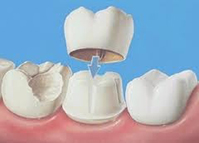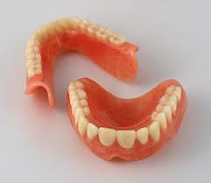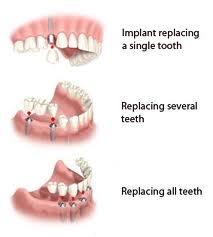Welcome to our Practice
At Pilot Point Dentistry, we have been serving the dental needs of our friends and neighbors in North Texas for over 25 years. Dr. James Bartee purchased the practice in 2016 and now is the sole dentist in the office. We place a strong emphasis on your comfort and on creating a pain-free experience. Everyone in our office enjoys seeing the entire family from kids to grandparents. We incorporate technology including digital x-rays, intraoral cameras and laser dentistry to provide state of the art dental care for your family.

James, Paige, Jude, Penelope and Wilson Bartee
James Bartee, DDS
Dr. Bartee grew up in Pilot Point and graduated from Pilot Point High School. Dr. Rene Scott, formerly with Pilot Point Dentistry, was his dentist while growing up. He attended dental school at the University of Texas in San Antonio and earned his Doctorate in Dental Surgery. Dr. Bartee starting working at Pilot Point Dentistry in 2014 and purchased the practice in 2016. He believes in treating patients like family, continuing education, and serving the community where he grew up.
Dr. Bartee is married to fellow Pilot Point native Paige (Kuhn) Bartee. They have twins (Jude and Penelope), a baby (Wilson), two cats (Ella and Jax), and a dog (Luna).
Services


Crowns and Bridges
Crowns are synthetic caps, usually made of a material like porcelain, placed on the top of a tooth. They are typically used to restore a tooth’s function and appearance following a restorative procedure such as a root canal. When decay in a tooth has become so advanced that large portions of the tooth must be removed, crowns are often used to restore the tooth. Crowns are also used to attach bridges, cover implants, prevent a cracked tooth from becoming worse, or an existing filling is in jeopardy of becoming loose or dislocated. Crowns also serve a cosmetic use, and are applied when a discolored or stained tooth needs to be restored to its natural appearance. Here is a video to help explain the process of crowns and bridges: Crowns and Bridges.
A tooth must usually be reduced in size to accommodate a crown. A cast is made of the existing tooth and an impression is made. The impression is sent to a special lab, which manufactures a custom-designed crown. In some cases, a temporary crown is applied until the permanent crown is ready. Permanent crowns are cemented in place.


Dentures & Partials
If you have lost all of your natural teeth, whether from periodontal disease, tooth decay or injury, complete dentures and partials can replace your missing teeth and your smile. Replacing missing teeth will benefit your appearance and your health.
Implant Crowns, Bridges, & Retained Dentures
A dental implant is an artificial tooth root that is placed into your jaw to hold a replacement tooth or bridge. Dental implants are intimately connected with the gum tissues and underlying bone in the mouth. The ideal candidate for a dental implant is in good general and oral health. Adequate bone in your jaw is needed to support the implant, and the best candidates have healthy gum tissues that are free of periodontal disease. The following link contains a video that helps explain the process of an implant: Implants.

Fillings
Tooth-colored fillings have always presented a more aesthetically pleasing alternative to traditional silver and amalgam fillings. However, due to evolving technology, they are now also stronger and more durable than their metallic counterparts. Indeed, a small filling may last a lifetime without ever requiring repair, while larger fillings should last for many years with appropriate care. Plus, tooth-colored fillings feel and function more like your natural teeth, allowing you to eat, speak, and smile with increased confidence and comfort. The following link helps explain what sealants are and why they are necessary: Sealants.


Veneers
An impression of the tooth must be made and a veneer molded by a lab technician. Because veneers require a small amount of enamel to be removed, they are permanent and non-reversible. The process involves buffing the tooth, removing an extremely thin layer of the tooth to allow for the thickness of the veneer, an impression of the tooth, and final bonding of the veneer to the tooth with special cement. A special light is used to complete the process.
Special thin laminates, called veneers, can often be used to correct discolored, worn down, cracked and chipped teeth. Veneers can also be used to close unsightly gaps between teeth. To see a video that walks through the process, click here: Veneers.
Whitening
Our state-of-the-art, in-office Power Bleaching system will make your teeth whiter in less than 1.5 hours. Another option is our home bleaching system you take with you for results in 2 weeks. You can also consider a combination program of both systems for optimal, long-term results. Here are videos that show you how in office whitening works: In Office Whitening.
TestimonialWhat our customers say
Dr. RS on RateABiz
Me and my tooth are happy!
Gwen at the front desk is SUPER helpful, Christine the dental assistant must have had a GREAT person train her, and Dr Bartee did an outstanding job..the shots didn't hurt at all, the treatment was efficiently accomplished, and the procedure was the appropriate treatment for my situation....I should know, I'm a dentist. You guys rock!
RB on RateABiz
Two Thumbs Up
My periodontist said I needed to see a general dentist and I chose to go local instead of going to Denton. So glad I went here. Everyone was kind and friendly. The dentist was professional and to the point. He said what needed to be done and he did it. I had a cavity under a crown and my tooth needed to be pulled. I have had major work from elementary age through adulthood and have had many levels of stress. (It is a dentist office!) I was treated respectfully with priority given to alleviate pain trauma and stress. It was a successful procedure: tooth out and my body did not have to be scraped off the ceiling. I gave a "two thumbs up salute"; drove home and watched some morning T.V.
KH on RateABiz
The friendliest dental office you will ever experience
This office, while being in a small town of Pilot Point, lives up to the small town feel of friendliness. You are not a number or a name in this office. The staff (and I mean ALL the staff) remembers who you are, and truly cares. Easy to reschedule when those last minute changes are needed, and is helpful when you need to be fit in at last minute also. Dr. Bartee is an expert in his field, and he and his staff make the patients comfortable and reassured of the procedures needed.
CH on RateABiz
High integrity and quality service:
As always, very friendly and professional staff. In addition, treated me fairly and did not bill me for the service because of the amount of previous work I had done on the same problem tooth.
Click on dots to see more reviews